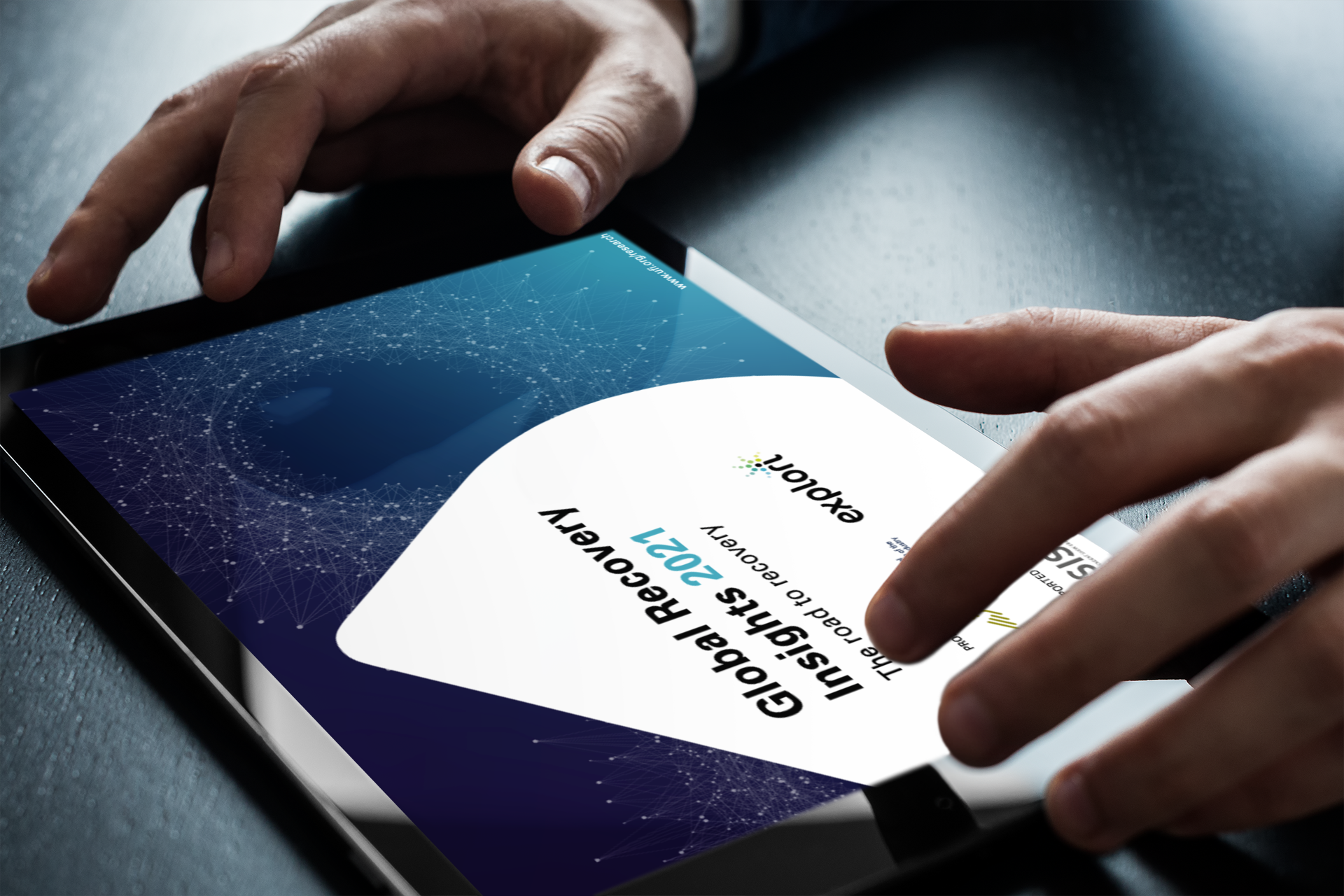How do corporates really feel about returning to live events?
This month, Explori’s Sophie Holt was invited by M&IT magazine to shares findings from the latest Global Recovery Insights study 2021, which reveals how corporate event professionals and their businesses really feel about returning to live events…
Originally created for M&IT Magazine
The great comeback
One year on and businesses who regularly exhibit at trade shows are still sorely missing live events. While the absence of trade shows has meant some resources have been diverted into other channels, businesses have been unable to replicate the value of trade shows in key areas. 66 per cent of businesses reported reduced networking opportunities and 44 per cent felt fewer leads had been generated due to the lack of live trade shows.
As a result, both visitors and exhibitors are now eager to participate in events at roughly the same frequency as they did pre‐pandemic (2018/19). With 72 per cent of existing visitors saying they plan to attend trade shows at the same or increased frequency, this indicates a positive appetite from attendee audiences for the return to the show floor.
For exhibitors at trade shows, the intention to participate in future events has also returned to pre‐pandemic levels, with 62 per cent planning to exhibit at the same or increased frequency as before.
Will the money return?
While some event marketers are still having to reduce their trade show budgets, overall the cuts have been less severe and less widespread than feared. Three quarters of exhibiting businesses expect their budget to return to pre‐pandemic levels within 12 months.
Spending on corporate events may also decrease, but like trade shows, the impact seems less severe than was suggested in 2020.
Interestingly, there is evidence that event marketers are prepared to protect investment in the shows they do choose to support, suggesting that high‐quality shows could be protected from budget cuts.
Of the marketers who will reduce their spend, three quarters are looking to exhibit at fewer shows and half will reduce their spend on travel and accommodation. However, of the respondents planning to save money by exhibiting at fewer shows, 60 per cent will maintain their spend on design and build and 67 per cent will continue to invest the same amount in floor space.
Unlike previous years where visitor numbers were the driving factor, 86 per cent of businesses exhibiting stated visitor quality is a large influence on their decision to support a show, against 67 per cent who are influenced by visitor numbers.
This ‘quality is judged primarily through previous experience at a show, suggesting established shows with high Net Promoter Scores (NPSs) are well placed to attract investment, but shows that are highly recommended are also valued, with over half of respondents saying this has a bearing on their decision.
Going digital
Across the entire survey, there is no evidence to suggest a wholesale shift away from live events towards digital – budgets for virtual events have remained flat. Whilst visitors appreciate the time and cost savings offered by digital and find it a convenient way to consume content, live events are still preferred across every aspect of the experience due to their unique ability to offer a high quality of networking and overall experience.
For exhibit marketers and sponsors, the live experience is still valued across all aspects, and above hybrid. Only 64 per cent of exhibitors have participated in a digital event, up from just 52 per cent 12 months previously. Explori’s exhibitor NPSSM benchmark for digital events sits well below that for live events. This suggests exhibitors’ experience at digital events is a significant challenge for organisers who wish to pursue revenue for a digital model.
Is hybrid the best of both worlds?
Hybrid events would seem to have the potential to combine the best of live networking and discovery with the best of digital content consumption. However, the cohort of visitors who have experienced a hybrid event were not enthusiastic about them. While better than a purely digital event, hybrid was seen as a detraction from the live event and there is evidence that hybrid events are waning in popularity as live events return.
Is there any future for digital and hybrid?
Previous studies have shown that digital had the potential to attract new audiences, particularly where the show was new. This has been borne out by the many events which have seen an increase in visitor numbers to their digital shows.
It appears this new digital audience has the potential to convert to a live audience in future, with around half of exhibitors and visitors saying they would be highly likely to attend an event in‐person given the chance, having previously discovered it digitally.
The Panel
For the first time, the Global Insights report surveyed a senior group of UK and US decision-makers who had no experience of using trade shows as part of their marketing mix prior to the pandemic. The results revealed that this group had been much more digitally engaged over the previous 12 months, having been much more likely to sponsor a digital event or organise their own than our exhibitor respondents.
This group is also interestingly more likely to convert from digital participation to in‐person participation than either current visitors or exhibitors. They were also highly likely to continue to participate in digital with over two‐thirds saying they would continue to run their own digital events and sponsor and exhibit at third‐party digital events.
Most strikingly, 55 per cent of this group now believe that they will exhibit at in‐person trade shows more frequently.
What will the future of trade shows look like?
The research identified four key findings regarding the future of trade shows.
Digital has the potential to broaden both the exhibitor and visitor audience. It will play a part in enhancing communities around the event, providing better access to content and a more curated experience.
The quality of the audience over quantity of numbers will rise in value. Future organisers will focus on engaging the highest quality audience and the narrative will shift away from selling based on the number of attendees.
As a result, the floor plan will change. Future organisers will offer a range of sponsorships and activations to help exhibitors capitalise on more curated, meaningful engagement with high-quality visitors, rather than focusing on footfall. Booth design and exhibit strategy will change accordingly.
Future organisers will also work more collaboratively with exhibitors at trade shows to ensure that the value proposition, both on and offline, is designed in conjunction with the exhibitor’s objectives and maximise investment is fully understood.
In summary
The Global Recovery Insights survey reflects the optimism felt by the exhibition industry that live events are returning to pre‐pandemic levels.
Budget cuts have not been as harsh as predicted and spending is expected to return to pre-pandemic levels within an average show cycle. Quality shows are likely to be protected and digital has opened up new opportunities to convert naysayers to the power of live!
The research was conducted by the live events research specialists Explori, in partnership with UFI and supported by SISO, has just been published. The global quantitative survey of trade show visitors and exhibitors, carried out in the summer of 2021, collectively gained 15,000 responses representing trade show participation in over 30 countries.
The full Global Recovery Insights report is now available to download here.
.png?width=150&height=61&name=explori_logo%20(1).png)


